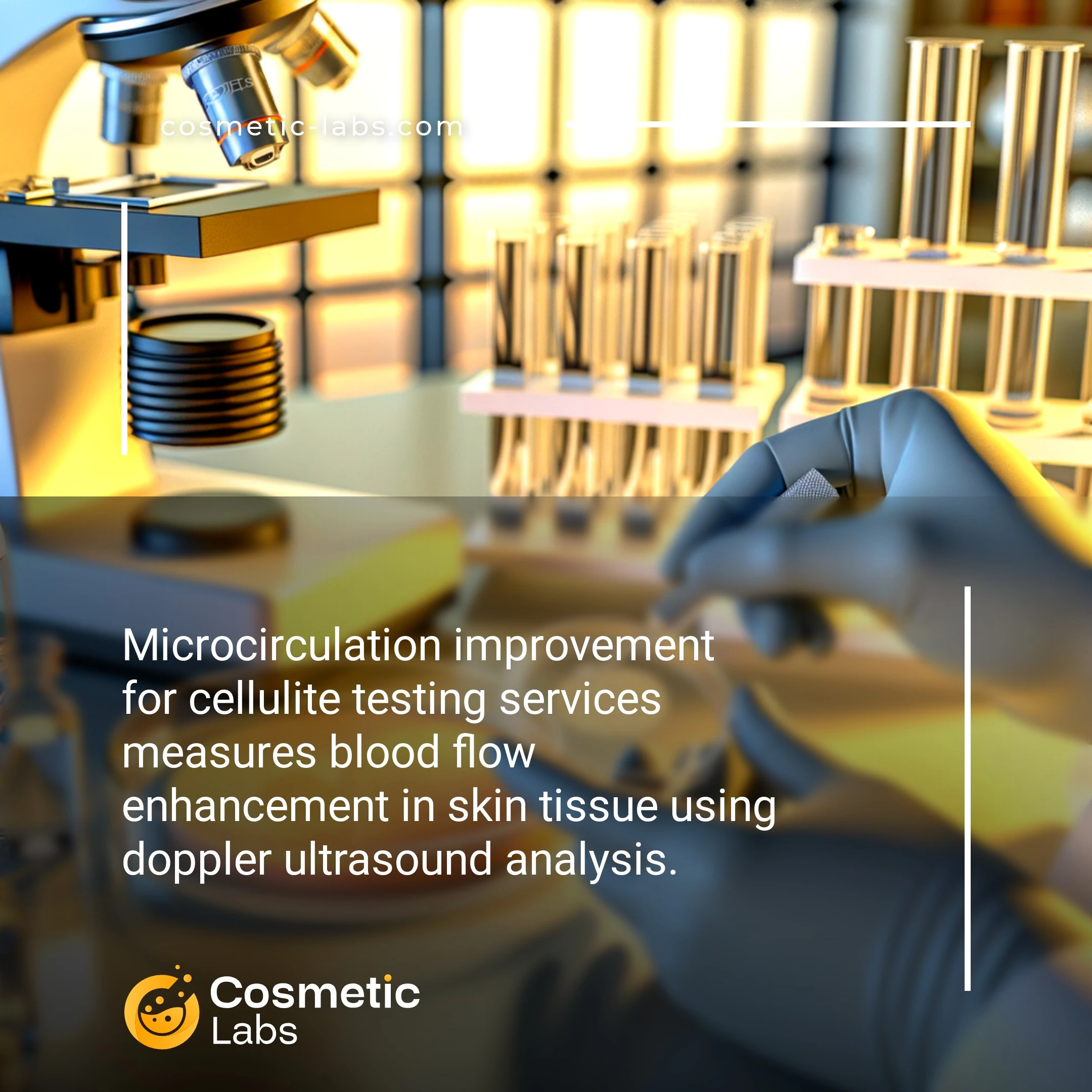Microcirculation Testing Services for Cellulite Products

What is Microcirculation improvement?
Microcirculation improvement testing for cellulite is a preclinical assessment that measures how cosmetic formulations enhance blood flow and lymphatic drainage in subcutaneous tissue. Our partner labs use Doppler ultrasound and thermography to quantify circulation changes, providing objective data on ingredient efficacy before human trials. This testing validates claims about improved skin texture and dimpling reduction by demonstrating actual vascular response at the cellular level.
Why do you need this service?
Cosmetic labs use microcirculation testing protocols to validate anti-cellulite formulations before market launch, measuring blood flow changes through doppler ultrasound and thermography. Beauty brands rely on these services to demonstrate quantifiable skin smoothing results within 28-56 day clinical trials, providing the regulatory documentation needed for marketing claims and consumer confidence.
Who provides Microcirculation improvement services?
All cosmetic labs providing Microcirculation improvement services
There is no company providing these services at the moment.
Microcirculation Enhancement Testing for Anti-Cellulite Products
Microcirculation improvement testing measures how effectively your anti-cellulite formulations boost blood flow in skin tissue. Labs use specialized equipment to track circulation changes, helping you validate claims about smoother skin texture and reduced dimpling appearance.
Blood Flow Measurement Techniques
Testing labs employ laser Doppler flowmetry and thermographic imaging to quantify circulation improvements. These methods detect even small changes in capillary blood flow within the dermis and subcutaneous layers.
Standard protocols include:
- Baseline measurements before product application
- 30-minute and 60-minute post-application readings
- Weekly assessments over 4-8 week study periods
- Temperature mapping to identify circulation hot spots
Labs typically test 20-30 subjects per study group to generate statistically relevant data for your marketing claims.
Skin Perfusion Analysis
Advanced testing facilities measure tissue oxygenation levels and nutrient delivery rates in cellulite-prone areas. This data helps brands understand how ingredients like caffeine, retinol, or peptides affect local circulation patterns.
Key metrics include:
- Oxygen saturation percentages in target tissue
- Capillary density improvements
- Lymphatic drainage efficiency scores
- Skin temperature variations
Partner labs on our platform can design custom protocols matching your specific ingredient profiles and target demographics. Contact a testing facility today to discuss your anti-cellulite product validation needs.
Practical Applications of Microcirculation Enhancement Testing for Cellulite Treatments
Cosmetic labs use microcirculation improvement testing for cellulite products to validate claims about blood flow enhancement and skin texture improvements through standardized protocols.
Anti-Cellulite Cream Development and Validation
Product developers rely on microcirculation testing to measure how topical formulations affect blood vessel dilation and lymphatic drainage in affected tissue areas. Labs use laser Doppler flowmetry and thermography to track microvascular perfusion changes over 4-8 week testing periods.
Testing protocols evaluate active ingredients like caffeine, retinol, and botanical extracts for their ability to increase local blood flow by 15-30% compared to baseline measurements. This data supports marketing claims about circulation enhancement and provides regulatory documentation for product registration.
Professional Treatment Device Efficacy Assessment
Beauty device manufacturers use microcirculation testing to validate radiofrequency, ultrasound, and mechanical massage systems designed for cellulite reduction. Labs measure tissue perfusion before and after treatment sessions using specialized imaging equipment.
Testing evaluates treatment parameters like frequency settings, application duration, and pressure levels to determine optimal protocols. Results show measurable circulation improvements within 24-48 hours post-treatment, helping manufacturers establish evidence-based treatment guidelines for professional users.
| Testing Method | Measurement Focus | Timeline | Key Metrics |
|---|---|---|---|
| Laser Doppler Flowmetry | Blood flow velocity | Real-time to 8 weeks | Perfusion units, flow changes |
| Thermographic Analysis | Skin temperature patterns | Immediate to 4 weeks | Temperature gradients, heat distribution |
| Ultrasound Imaging | Tissue structure changes | 2-12 weeks | Dermal thickness, fat layer density |
Ready to validate your cellulite treatment’s microcirculation benefits? Contact specialized cosmetic testing labs on our platform to discuss your specific testing requirements and timeline.
